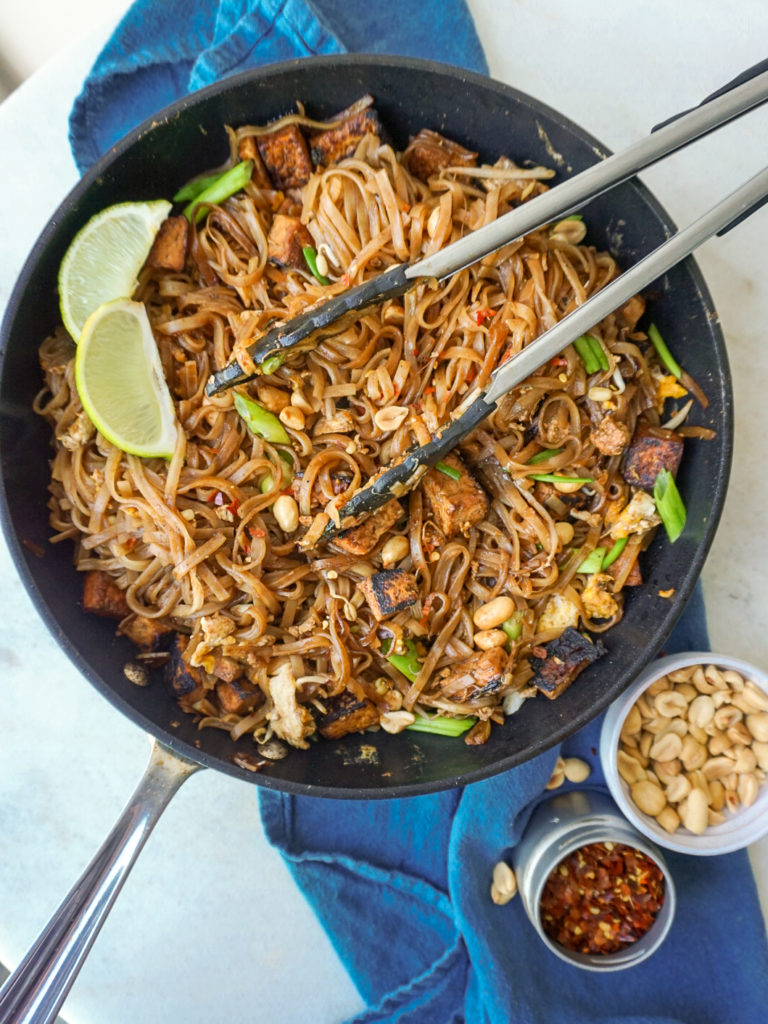
Like most people, my gateway drug to Thai food was pad thai. And though since then I’ve branched out into curries and congees, to green papaya salad and larb (which, now that I think about it, I’m quite hungry for), I always come back to this particular dish– and now, to this particular homemade pad thai recipe.
Part of my fixation comes from my more general obsession with noodles of all varieties, which is, um, well-documented. (Is paleo still a thing?) But another part of it is the commitment in Southeast Asian cuisines to balancing sweet, spicy, sour, and salty. It makes for unique combinations of flavors that you simply don’t find in Western cooking.
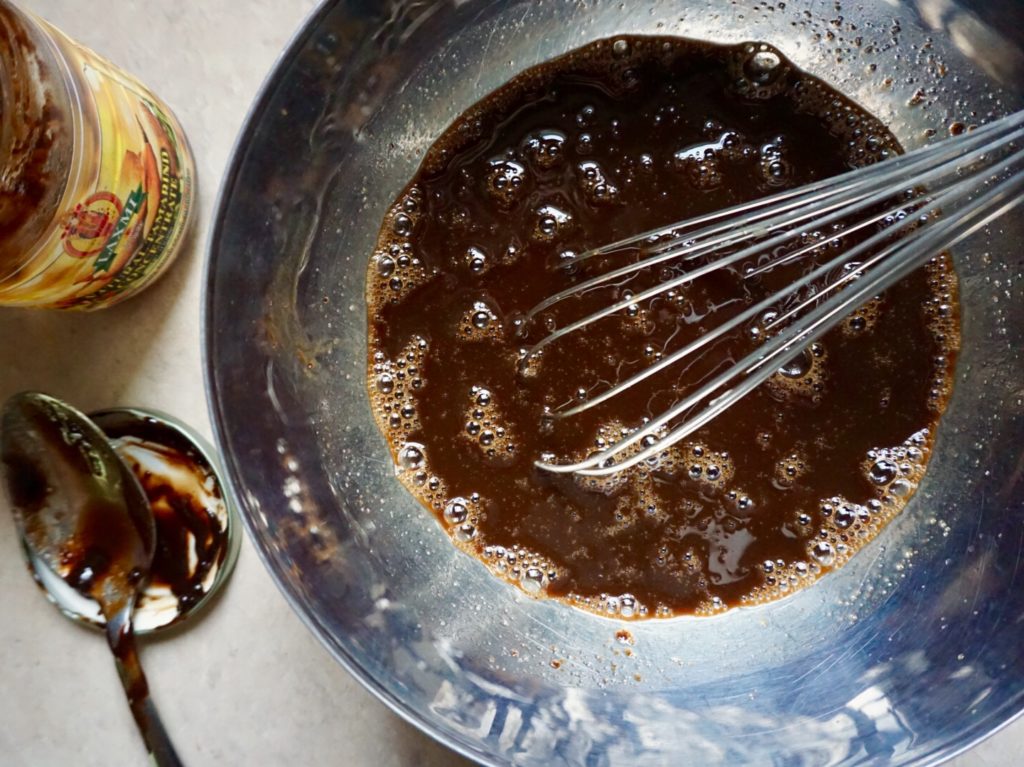
Well, that’s the ideal, anyway. But unless you’re living in a Thai-food mecca like Sydney or San Francisco, the pad thais that restaurants serve too often fall flat. My most common complaint is that pad thai can be unbelievably, cloyingly sweet. But I’ve also been served pad thais that are too salty, not spicy enough, under-sauced, and far, far too greasy.
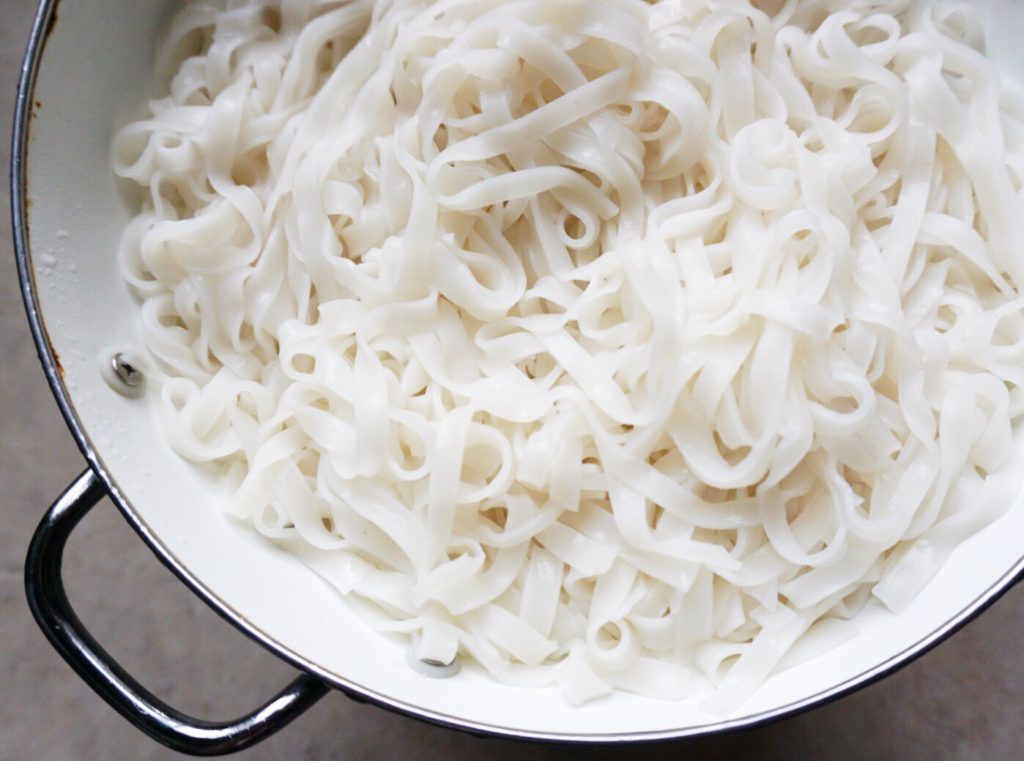
Perhaps unsurprisingly, I’ve taken matters into my own hands. Making my own pad thai has allowed me to balance the flavors exactly the way I like them: only lightly sweet, salty with fish sauce, and a nice heat that caresses the back of my throat on the way down.
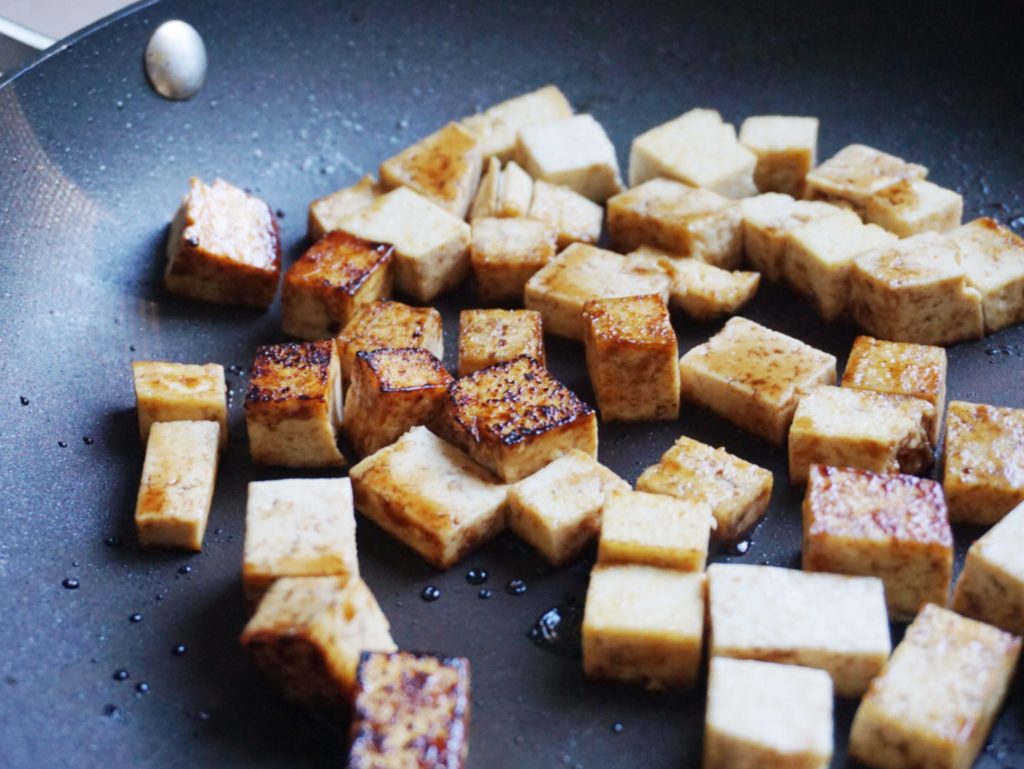
Even if you’re not as much of a pad thai perfectionist as I am, there’s still plenty of reason to make your own. For one, it’s much cheaper than takeout: the ingredients for 4-6 servings of this homemade pad thai recipe cost about as much as your $13 delivery plus tip.
Second, you can go a little lighter with the oil–no feeling like you’re going to pass out after you’re done eating.
And third, once you get the sauce together, and assuming you keep noodles and eggs around, you can have pad thai anytime you want–which, around here, is every single night until I run out of noodles or eggs or I decide I should eat a vegetable or two.
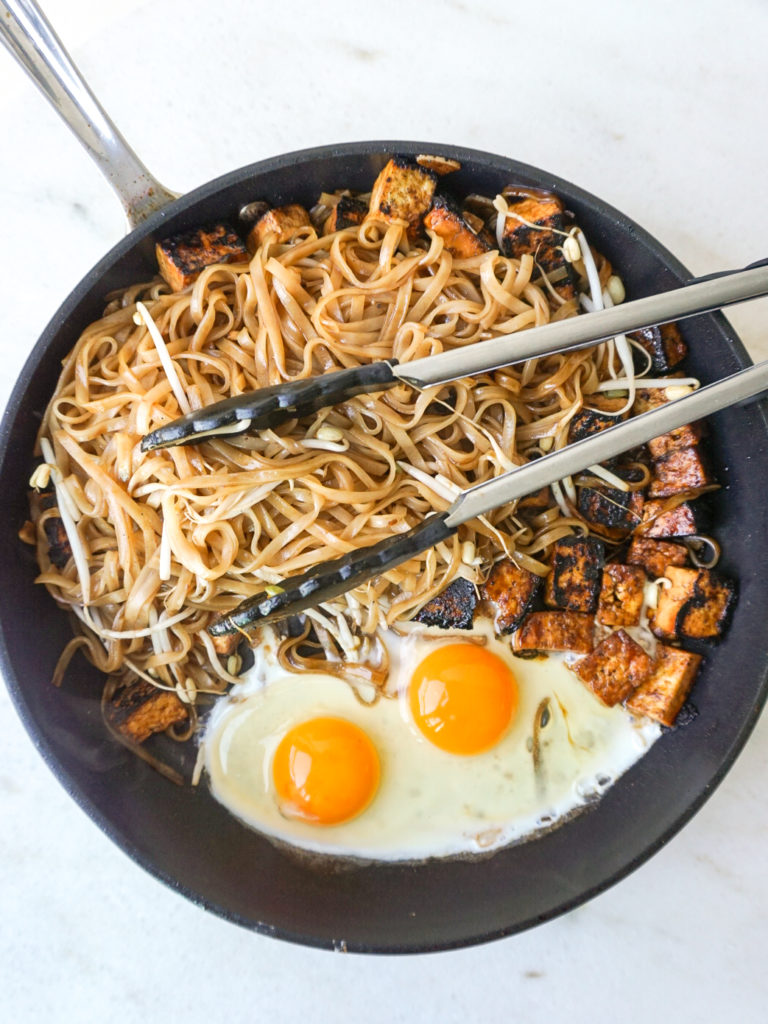
You’ll probably need to make a quick trip to the Asian grocer or the Asian aisle of your supermarket (or hop onto Amazon, links below) for tamarind paste and a few other ingredients. But one trip gives you endless pad thai. It’ll be worth it, I promise.
Previously:
One year ago: Pear and Almond Tart
Two years ago: Dutch Oven on a Budget (Now on sale for $45, which is such a steal. Get it now, use it every weekend for the next five months.)
And for my Australians:
Six months ago: Mexico City Food Guide (developed with a dear friend and former CDMX resident)
1.5 years ago: Tip: How to Lessen the Bite of Red Onions
2.5 years ago: Muesli with Nuts, Dried Fruit, and Coconut (brekky for days!)
Also in the “better-than-takeout” category:
Ontama Bukkake (first recipe on the blog and still a go-to–check out the ingredient list and combine trips while you’re at the Asian grocer!)
Green Papaya Salad (make this with the pad thai and have friends over for a Thai feast)
Takeout-style Crispy Tofu (reader favorite!)
Criminally Easy Chicken Shawarma (break apart the cooked chicken and throw it into some flatbreads along with lettuce, a drizzle of hot sauce, and a dollop of yogurt)
Homemade Pad Thai
Pad thai recipe adapted from one posted 7-8 years ago on the now-seemingly-defunct Chez Pim food blog
Serves 4-6
Ingredients
3/4 cup (177mL) tamarind paste (see notes following recipe for more information on this ingredient)
3/4 cup (177mL) fish sauce (usually about $5/bottle in store)
1/2 cup lightly packed (85g) brown sugar
3/4-1 teaspoon (or more, to taste) cayenne
16 ounces (454g) banh pho rice noodles (either medium or large width, as shown in photos, above)
a few tablespoons neutral oil, such as canola or vegetable, for frying
14-28 ounces (396-793g) extra-firm tofu, cut into smallish cubes (the low end will give you a handful of tofu per serving, the high end two handfuls– or see notes below recipe for substitutions)
4 cloves garlic, sliced
4-6 eggs (one egg per serving)
one bunch green onions, sliced into about 1-inch (2.5cm) pieces
4-5 big handfuls of beansprouts (optional but great)
a couple small handfuls dried shrimp (optional and an acquired taste)
a few big handfuls roasted, lightly salted peanuts, to serve
2-3 limes, cut into wedges, to serve
red pepper flakes, to serve (optional)
Instructions
Combine the tamarind paste, fish sauce, and brown sugar in a bowl. Whisk until the brown sugar dissolves. Then add the cayenne by the quarter-teaspoon until the sauce is as spicy as you like it.
Bring a pot of water to boil on the stove. Put the noodles in the pot and boil for a couple of minutes. Remove, drain, and rinse noodles when tender, but still slightly undercooked.
Now you’re ready to fry everything up. Unfortunately, pad thai relies on having a very hot pan for everything to fry nicely, rather than just steam into a gloppy mess. If you have a huge pan, you can cook a couple of servings at once; otherwise, just stick to one serving at a time. (See notes following recipe for leftovers instructions.)
Heat a large, non-stick frying pan over high heat. Add a splash of oil to the pan. Add enough tofu to the pan for 1-2 servings (however much you’re making in this batch). Let fry for a minute. Then add a couple spoonfuls of sauce to the pan–just enough to give the tofu some color. Continue to cook for another minute or so, until the tofu is brown on the edges.
Add another small drizzle of oil to the pan, then add the noodles (I eyeball it, but about 2 loosely-packed cups is generally enough for one serving), the garlic, about 1/3 cup of the sauce per serving (or enough to turn the noodles a light brown), and a handful of beansprouts, if you’re using them. Stir until combined, about 30 seconds.
Now, shove all of the noodles over to one side of the pan. Crack one egg per serving straight into the pan and pop the yolk with your spatula. Wait 15-20 seconds, until the egg seems a bit cooked, and then toss the egg with the noodles (it will finish cooking and break up as you toss).
Add the green onions and a bit more sauce (you want the finished product to be a moderate brown color) and toss one final time.
Remove from pan onto plate. Garnish with peanuts and dried shrimp (if using). Serve with slices of lime and red pepper flakes for extra heat if desired.
Notes
Tamarind paste: You want to buy the pre-prepared paste, not the pure pulp. The paste comes in a jar; the pulp is like a small brick wrapped in plastic. (The pulp you have to soak in hot water and work with your hands to turn it into paste, which is an unnecessary pain in the neck when you can buy it pre-prepared.)
Not a tofu lover?: If you prefer a pad thai recipe with chicken or with shrimp, feel free to substitute either here. With chicken, cube and cook as described with tofu. With shrimp, cook for maybe a minute or two less.
Leftovers?: If you’re not planning on having 4-6 servings of pad thai tonight, there are two ways to save this for leftovers.
Option one: cook all of the servings one right after the other, then store the cooked pad thai in the fridge for up to 4 days. This is easier, but leftover noodles are never quite as good as fresh.
Option two: (1) boil the noodles, (2) prepare the sauce, (3) cube the tofu, and (4) slice the garlic and green onions. Then store all of those ingredients separately in the fridge. Tomorrow night, when you’re ready for round two, your mise-en-place will be ready to roll and pad thai will be yours faster than you can say “takeout.”
Leftover sauce?: You can store any extra sauce in an airtight glass jar in the fridge for 2-3 months.
Make your own pad thai at home for the perfect balance of sweet, salty, and spicy flavors—way better than takeout!